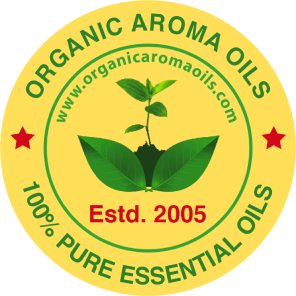How Essential Oils Are Extracted?
The global essential oil industry is experiencing rattling growth every passing year because of its super beneficial properties and wide use in therapeutic, and aromatic applications. Extracted from various parts of plants, essential oils are concentrated liquids that capture the essence of a plant's fragrance and beneficial properties. There is the calming aroma of lavender oil and the invigorating scent of citrus oil that is seen in our daily lives. Each essential oil is extracted and/or distilled in a unique way. In this article, we will discuss the essential oil extraction processes which are standard and most used throughout the globe.

Common Essential Oils Manufacturing Processes
There is a compulsory need to know about chemistry, and botany for extracting essential oils. The production organizations deploy several extraction and distillation techniques, each of which has been customized to a single plant variety and its unique characteristics. Discover a short approach to creating essential oils by reading on.
Distillation: Steam distillation is the most common method of extracting essential oils. Plant material is placed in a distillation apparatus, and steam is passed through it. The heat causes the oil glands within the plant to release their aromatic compounds, which then evaporate with steam. The steam is subsequently condensed, separating the essential oil from the water. Steam distillation is suitable for getting lavender oil, peppermint oil, and eucalyptus oil.
Solvent Extraction: For plants with delicate aromas that may not withstand the high temperatures of distillation, solvent extraction is employed. Hexane and other solvents are used in this procedure to separate the oils from the plant material. The resulting mixture is then separated, leaving behind the essential oil. There is no question about the effectiveness and efficacy of this process of extracting essential oils. Once this course of action concludes, it becomes essential to eliminate any remaining solvents as well. For this, other processes are carried out.
Expression (Cold-Pressing): This procedure is usually used with citrus fruits. This process is also known as scarification or expression. With the application of mechanical pressure, the oil gets extracted. The cold pressing method is simple yet efficient; ideal for getting lemon oil, orange oil, and grapefruit oil.

Essential oils, derived naturally from plants, possess properties that promote natural healing. The fragrance and advantages of the plant can be captured with just a small amount of oil. Steam distillation and solvent extraction are two different approaches to making these oils. By using either approach, the oils are kept pure and their effectiveness is preserved. It is an accurate claim that nature is the finest chemist. By combining plants with scientific techniques, these magnificent extracts are produced.
It is crucial to bear in mind that essential oils possess great potency, hence requiring only a small quantity when utilized. Whether you seek relaxation, relief, or simply delight in their fragrant allure, essential oils offer a fragrant journey into the heart of botanical wonders. By using all the extracted/distilled oils in your daily routine, you will improve your wellness and acquire serenity.
Other Useful Posts From Our Blog:
4 Best Essential Oil for Itching Skin
10 Best Natural Oils to Treat Acne, Pimples, and Blemishes
7 Best Essential Oils Which Mosquitoes Really Hate
How to Use Lavender Oil for Hair Growth and Hair Health
11 Benefits Of Rose Oil For Beauty and Health
Where to Buy Essential Oils? A Guide to Buy Essential Oils
Are Essential Oils Safe for Dogs?




